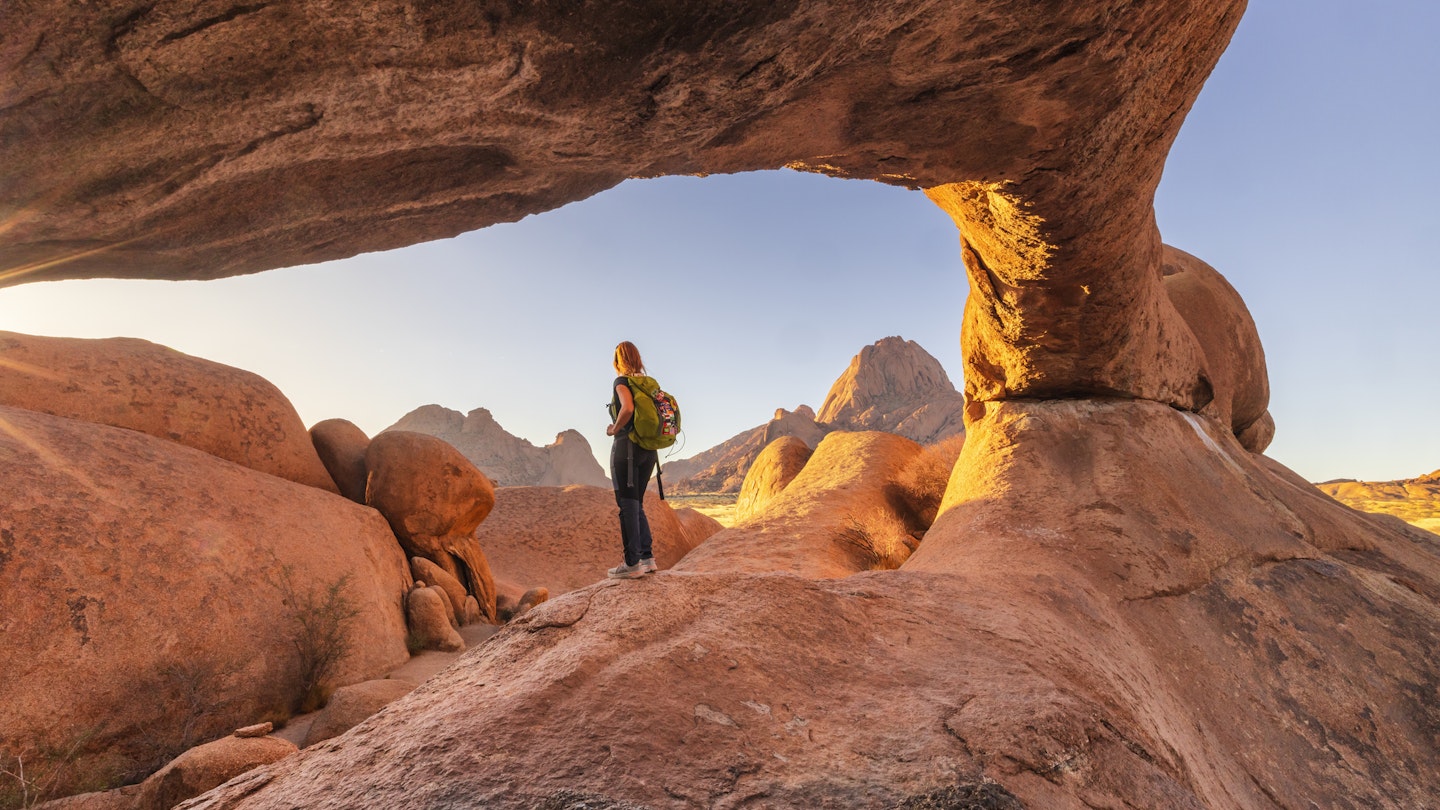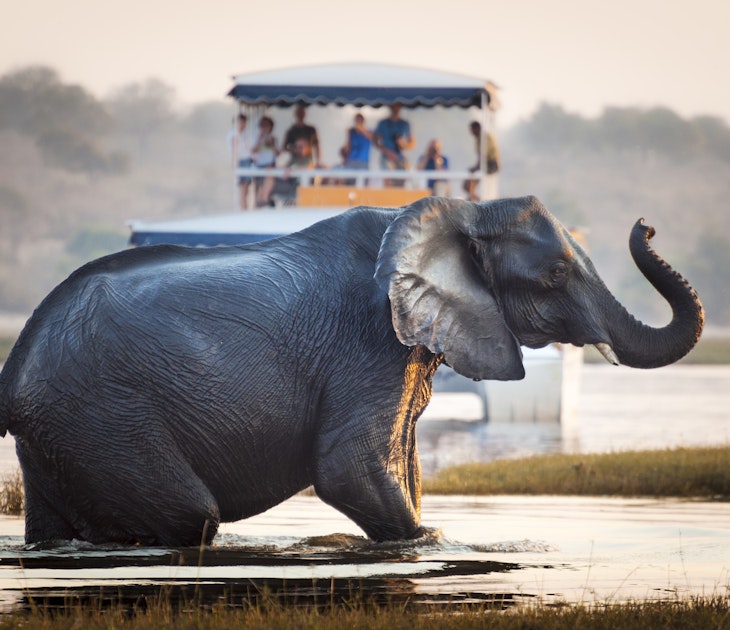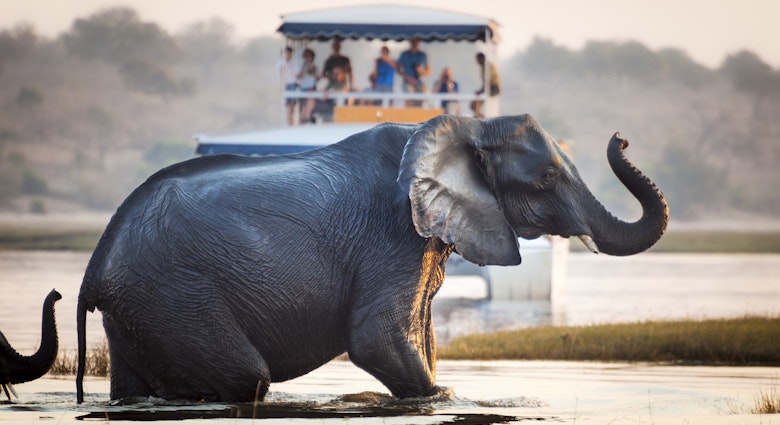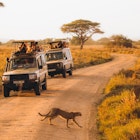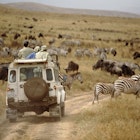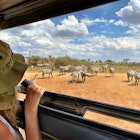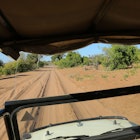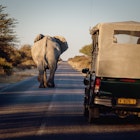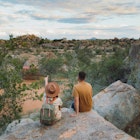Namibia is a land of superlatives and contrasts.
It's home to Africa’s largest canyon, its oldest desert and some of its highest dunes. It has a 1,500km (932mi) coastline and a network of languid waterways, yet it is one of Africa’s driest countries. Sun-baked tracts of desert are nourished by fog that rolls in from the icy Atlantic, enabling seemingly empty expanses to support a variety of mega- and microfauna.
Exploring Namibia is a delight, thanks to its good infrastructure and well-developed tourism industry. For a taste of the country's highlights, here are the best places to visit.
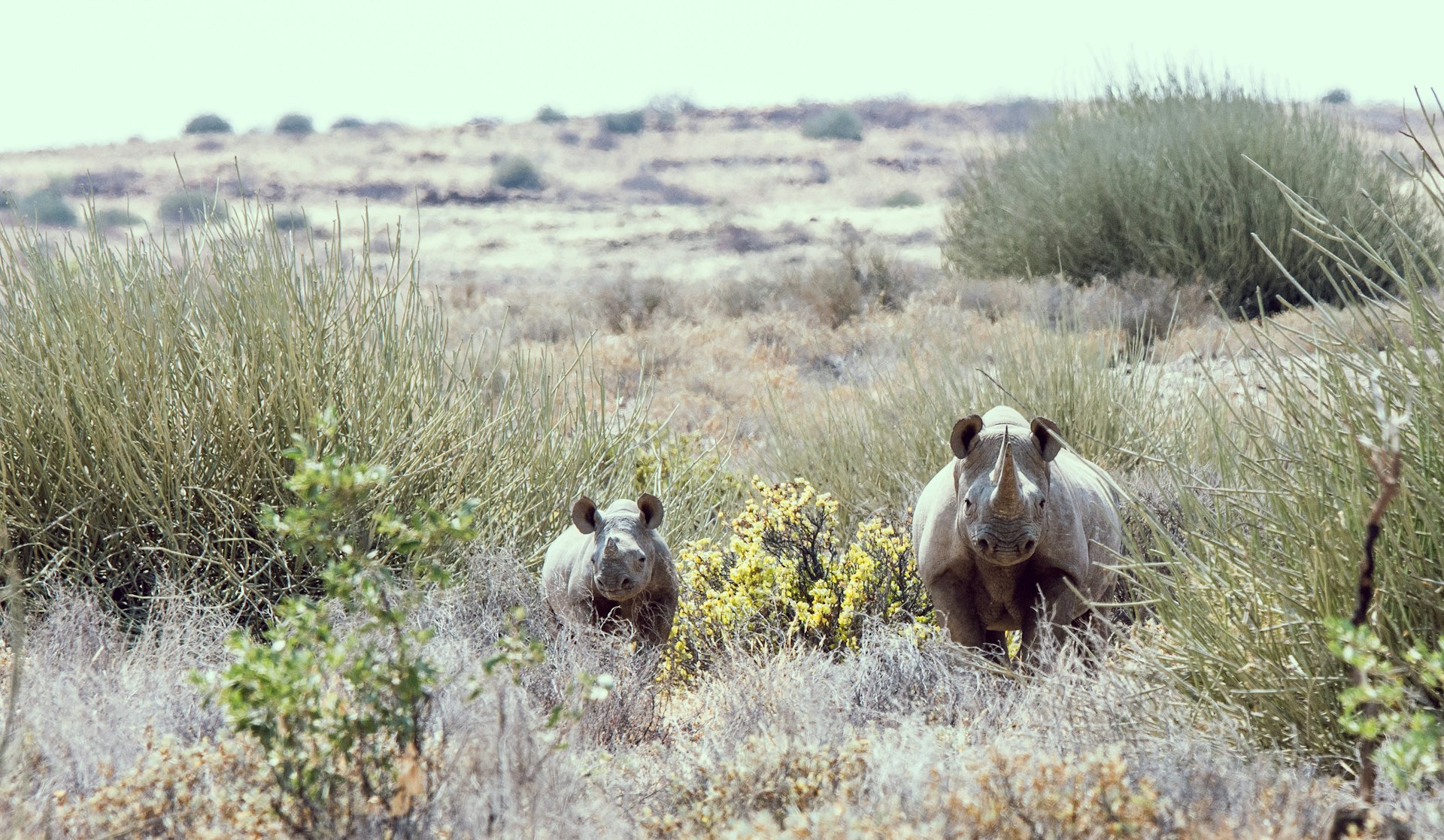
1. Etosha National Park
Best safari destination
Etosha is Namibia’s safari destination, famed for large herds of zebras, wildebeests, impalas and other wildlife that gather around its many water holes during the dry season, as well as the huge flocks of flamingoes that make their way to Etosha pan for breeding during the rainy season. Etosha is also notable for being home to one of Africa’s largest populations of the critically endangered black rhino. One of the best places to spot these is the floodlit water hole at Okakuejo.
Planning tip: Etosha is ideally set up for self-drive exploration, with a well-spaced network of camps and a good road network.
2. Skeleton Coast National Park
Best place for solitude and desolate, raw beauty
Stretching 500km (310mi) along Namibia’s northwestern shoreline is Skeleton Coast National Park, splendid in its desolation with barren, wave-pounded sands that were once littered with the bones of whales, seals and hapless humans.
Permits are required for exploring the park’s northern section, although you can get a good feel for the area in the lower portion between the Ugab River entrance and the fishing outpost of Terrace Bay. The exception to this is the December–January high season, when it is a favored destination for anglers.

3. Swakopmund
Best spot for adrenaline activities
Dune boarding, skydiving and surfing are just some of the many activities that are possible in Namibia’s adventure capital of Swakopmund. With its chill vibe, German-influenced architecture, array of adventure sport operators and good range of restaurants and accommodations, the town has become a favorite stop on the Namibian travel circuit.
Just 35km south is Walvis Bay, known for its flamingoes and wetlands, and the nearby 383m-high (1,256ft) Dune 7, Namibia’s highest. Further along, don’t miss Sandwich Harbour with its bird-filled lagoon dramatically set against a backdrop of towering sand dunes.
Distances between attractions along the central coast aren’t too prohibitive. Even if you have time for just a week here, you’ll be able to get a good introduction to many of Namibia’s highlights.
Detour: Don’t miss at least a day excursion from Swakopmund north to Cape Cross seal reserve, where you can see, hear and smell thousands of Cape Fur seals as they lounge on the beach and frolic in the waves.
4. Damaraland
Best region for desert-adapted wildlife
Damaraland, nestled between Etosha National Park and the coast, is a hauntingly beautiful region where desert-adapted elephants and lions roam amidst craggy rock formations, along dry riverbeds and past gnarled welwitschia mirabilis. It’s also the site of one of Africa’s most extensive collections of rock art, at Twyfelfontein, with more than 2,500 engravings.
Detour: There’s also a wealth of rock art at Brandberg, or "fire mountain", several hours' drive to the south. Watch the sun set against the red rocks to see how it got its name.

5. Sossusvlei
Best place for photography
In the heart of the Namib Desert is the tiny enclave of Sesriem, gateway to the stunning dune panoramas around Sossusvlei and nearby Deadvlei. These pans are among Namibia’s most iconic sights and a photographer’s paradise with the sharp lines of the surrounding ochre dunes standing in stark contrast to the clear blue skies. Nearby are some lovely desert lodges, and not far away is NamibRand Nature Reserve, a designated dark sky reserve.
Planning tip: Overnighting at Sesriem campsite, inside the main park gate or at one of the lodges inside the park, allows you to get a jump start on your explorations and climb Big Daddy or the nearby Dune 45 while the sun is still relatively low in the sky. For another perspective on this otherworldly landscape, try a sunrise hot-air balloon safari.
6. Lüderitz
Best place for coastal birds and wildlife
Lüderitz, the largest population center in southwestern Namibia, has a completely incongruous setting, sandwiched between sea and desert. Its busy port and single paved-access road contrast with early 20th-century German-style architecture, giving the town a time-warped, end-of-the-road feeling.
About 20km (12.5 miles) west of Lüderitz around the bay is Diaz Point, a rocky, wind-buffeted outcrop known for its seabirds and seals. Southeast of Lüderitz is the old ghost town of Kolmanskop, a mining settlement that is slowly being taken over by the desert.
Detour: Stretching south from Lüderitz are the empty expanses of Tsau //Khaeb (Sperrgebiet) National Park. This former diamond-mining zone is a biodiversity hot spot with a diverse array of succulents. Day excursions can be organized in Lüderitz. On the park’s eastern edge, near the small town of Aus, watch for survivors of the area’s once-large population of wild horses.

7. Southern Namibia
Best destination for a river adventure
The Orange River, which forms Namibia’s border with South Africa, is all about multi-day canoe adventures where you paddle by day, camp under the stars and spend languid afternoons relaxing on the riverbank. The vineyard-fringed border town of Noordoewer is a popular base.
Combine four or five days on the river with a visit to Fish River Canyon and |Ai-|Ais/Richtersveld Transfrontier Park. A handful of viewpoints let you glimpse the canyon’s massive scale.
Planning tip: Fancy a challenge? In the cooler months, put on your hiking boots for an unforgettable 85km (53mi) hike through the canyon’s interior, finishing at the relaxing |Ai-|Ais hot springs.
8. Kunene Region (Kaokoland)
Best place for remoteness
In Namibia’s far northwestern corner is the remote and seldom visited Kunene region, with its isolated valleys, empty scrublands, mountains and desert. It is home to the semi-nomadic Himba people, known for their traditional lifestyle and red ochre skin cream. You’ll have many opportunities here to get to know them and learn about their culture.
Kunene is fringed to the north by the sandbanks and waterways of the Kunene River delta. East of here, the winding Kunene River, which forms Namibia’s border with Angola, flows past pretty Epupa Falls and some lovely riverside lodges.
Planning tip: Kunene is high adventure country. Fully equipped 4WD excursions and fly-in tours are the main ways of exploring the region’s remote expanses.

9. Zambezi Region (Caprivi Strip)
Best destination for water-based wildlife watching
Northeastern Namibia is miles away from Windhoek and much of the rest of the country, both in distance and in feel, its languid waterways offering a complete contrast to the arid desertscapes more prevalent in the south. Home to Bwabwata National Park, the far northeast is ideal for a detour if you’re combining travel in Namibia with visits to Zambia and Victoria Falls.
Enjoy the night-time symphonies of chirping and river noises and the area’s relaxed lodges and campgrounds while listening to hippos and watching elephants spraying water over themselves along the riverbanks.
10. Northern Namibia
Best place for getting to know local culture
Densely populated northern Namibia is the cultural heartland of the Owambo, Namibia’s largest ethnic group. Learn about local culture around Ondwangwa, visit the moving memorial marking the birthplace of Namibian independence at Omugulugwombashe, hunt up local festivals such as oshituti shomagongo (marula fruit festival) and sample some omagungu (mopane worms) and omboga (greens) at one of the region’s many small eateries.
11. Windhoek
Best place to delve into Namibia’s history
No visit to Namibia is complete without at least a brief stop in the country’s lively capital. Perched atop an inland plateau at about 1,700m (5,577ft), Windhoek is one of the world’s highest capital cities. It is also Namibia’s main urban hub and the best place in the country to buy crafts and to stock up before setting off to explore.
Detour: Surrounding Windhoek between 1,700m (5,577ft) and 2,000m (6,562ft) in altitude are the Khomas Highlands with cloud-free skies, open grasslands and rolling peaks. Check out the local wildlife at tiny Daan Viljoen park on Windhoek’s western edge or Na’ankuse Wildlife Sanctuary to the east.

